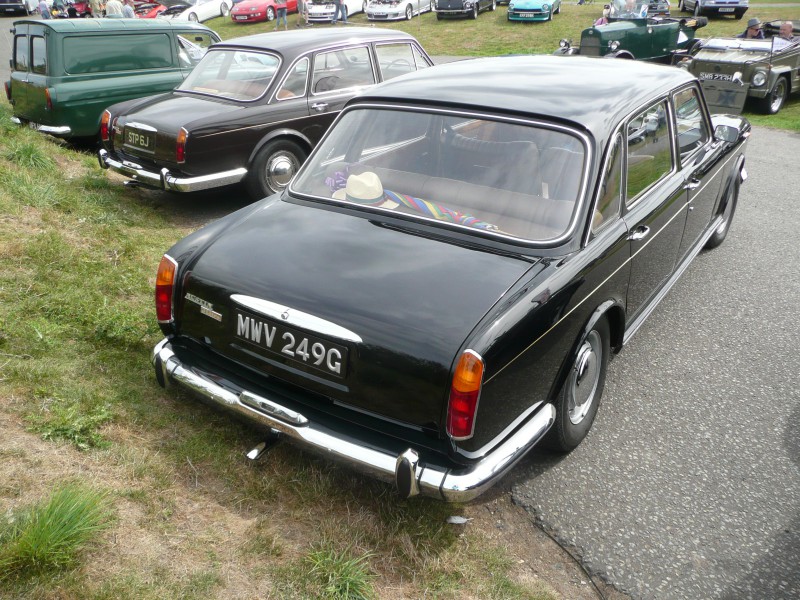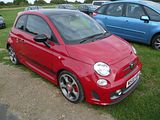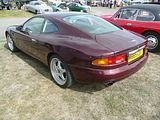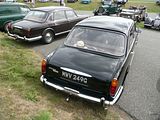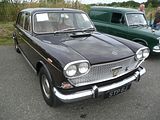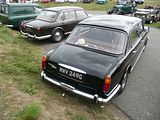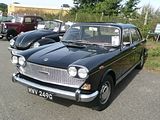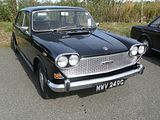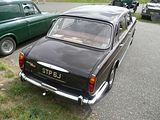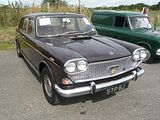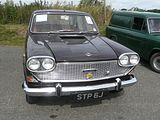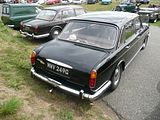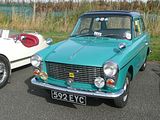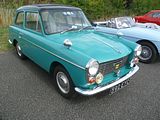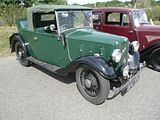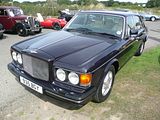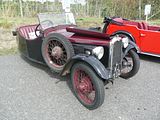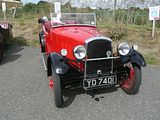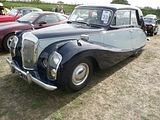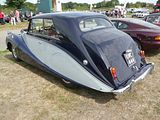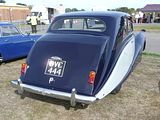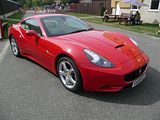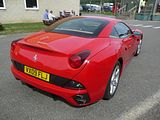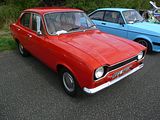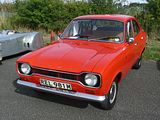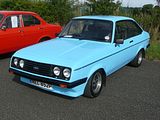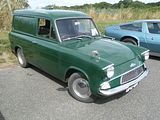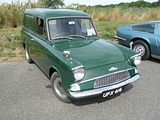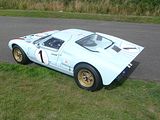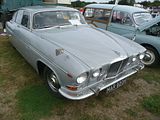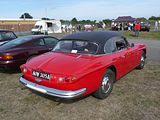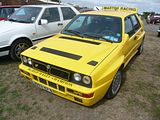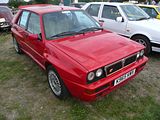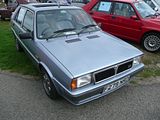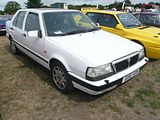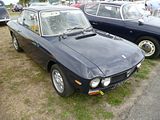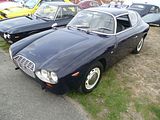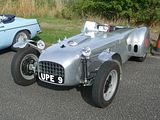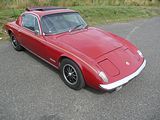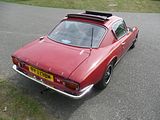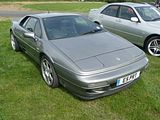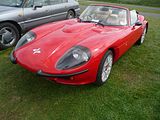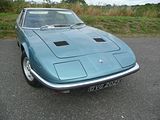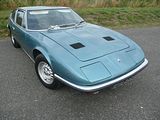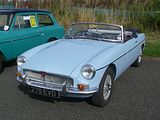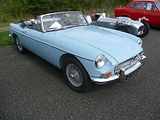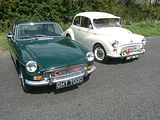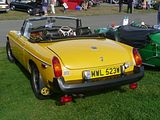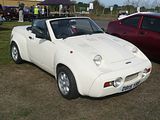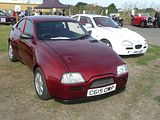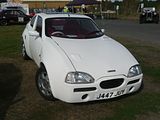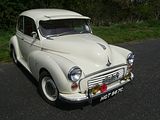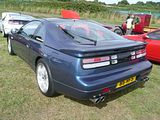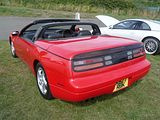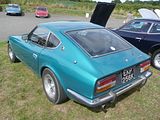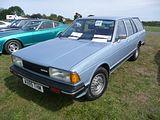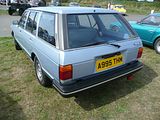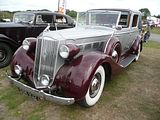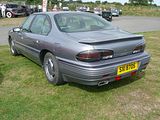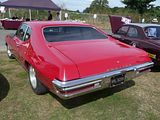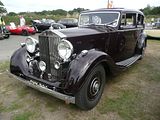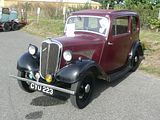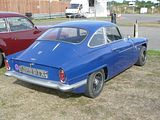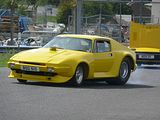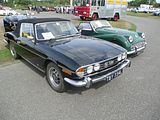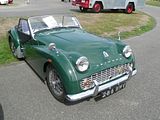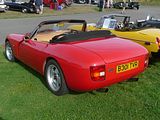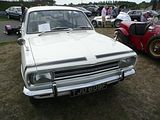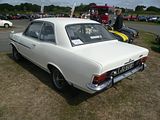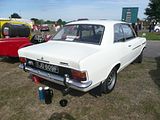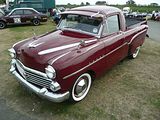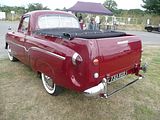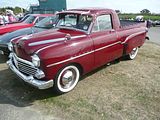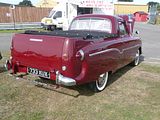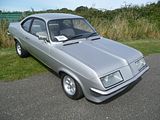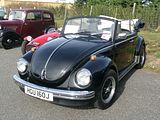Although it is always sad when an event that you have enjoyed is removed from the schedule, given the number of alternatives available on any given weekend during the summer months, then it is not as if this leaves a void with nothing automotive to do. For the past three years, the first weekend of September has featured the Chelsea AutoLegends gathering, but that was cancelled for 2013, thus leaving a space for me to go to something far more local, an event which I last attended in 2008, namely the “Rare Breeds” gathering held at the Haynes Motor Museum. First taking place in 2007, this is an event aimed specifically at those unusual and rare models that you don’t see very often, either because the car only ever sold in small quantities, or because for various reasons almost all of those made have long since been scrapped. An element of pre-registration meant that the organisers had some idea of what to expect, but even so they still had surprises, and it is certainly true that were some cars the like of which you do not see often at all. All told there were well over 100 machines on show, of which these caught the photographer’s attention:
ABARTH
Although you can go several days without seeing a modern Abarth, even now, 5 years after the brand’s relaunch, there are about 5000 cars on UK roads, so “rare” is not quite the right word. Accordingly, this 500 was not actually part of the display, but was to be found parked up in the car park.
ALFA-ROMEO
As a one off, David Roots’ Alfa Lenham Special was absolutely on target with the theme of the event. Mysteriously I never found David all day, though I know he was there as we subsequently talked about some of the cars we had seen that were present.
ASTON-MARTIN
This DB7 turned out to the very first production model, built late in 1994 and first registered early the following year
AUSTIN
With less than 10,000 of Austin’s large 3 litre saloon made in a 4 year production life, these cars were never common even when new. They are very rare these days, so to get two of them at the same event was quite a surprise.
Less rare, though not a particularly common sight these days is the A40 Farina. This is an early car.
Dating from the mid 1930s was this Ten open Tourer.
BENTLEY
A very imposing Mulsanne arrived late in the morning.
BSA
Better known for their motorcycles, BSA did make a number of light and sports cars in the 1930s, and there were three such examples parked up next to each other. One of them will need rather a lot of work to restore it to its former glory.
DAIMLER
This is a Dauphin. Originally built as a Lanchester, it was transformed into a Daimler by dint of some judicious detailed changes, but despite this just 2 such cars were made, before the venture was abandoned.
FERRARI
This 456 GT arrived late in the morning.
Parked up outside the temporary entrance to the museum was this California.
FORD
Definitely in the category of “once common, now not so much so” were a number of Fords, including a pair of Escorts. Of these. the Mark 1 1300L model was the rarer. It was offered for a sale at a rather ambitious sounding £8,000.
This Anglia Van is also a rare survivor, as most of these had very hard lives and were worn out and scrapped a long time ago (or they rusted away, of course!).
This GT40 replica was attracting lots of interest, as you might expect for such a strikingly styled car.
JAGUAR
The gargantuan Mark X of 1961 evolved into the equally massive 420G towards the end of its production life late in the 1960s. This is one of the last such cars made.
JENSEN
The CV8 was a fairly short lived model which came between the 541 models of the 1950s and the far better known Interceptor of 1966. Not perhaps the most elegant model the firm produced, but these cars are supposed to be quite good to drive.
LANCIA
There was quite a display of Lancias, some of which had apparently travelled from quite a distance to attend. Most numerous were the Delta models, and it was good to see a 1300 LX as well as the more common Integrale cars.
Also on show was a Thema Turbo, the very pretty Fulvia Coupe and a Flavia Zagato Coupe
LOTUS
The Lotus 7 is quite a familiar model, even if it is more often seen in its Caterham guise than the original Hethel product, but its immediate precursor, the Lotus Six is not a car you see very often at all. Perfect then for an event like this, and indeed there was one present.
The Plus 2 was based on the Elan concept but with more space and luxury in its larger bodyshell.
This Esprit was another car which I found in the public car park as opposed to the main event.
MARCOS
Mantula Spider
MASERATI
In many ways the most “exotic” car of the day was this Maserati Indy. Lovely.
MG
With around half a million cars made, and a good survival rate, the MGB is not what you would call particularly rare. This is a very early car, with the pull door handles.
It was joined by a GT and a much later Roadster model.
MIDAS
The original Midas was born in the 1980s, following up on the well known Mini Marcos. Initially using Mini components, the model was updated in the mid 1980s to use more items from the Metro, and the car had a certain charm with its distinctive styling. What I had not realised is that this Metro based kit car had later received a rather unfortunate facelift, but the evidence was clear to see at this event, as alongside the original design were three cars sporting the later front end with reshaped bonnet and Rover Metro front light units. As is often the case with facelifts, this did not look like an improvement. A little research elicited that there is a complicated history around Midas, with lots of changes of ownership of both the company and some of the models in the 1990s. Cars like these with the new front end and K Series engines were called Cortez and ensued after the sale of the company in 2000, and made for a couple of years before another bankruptcy brought everything to a halt. The rights to the cars were acquired by yet another startup, called Alternative Cars Ltd, and production resumed in 2004.
MORRIS
The ubiquitous Minor saloon claimed one of the display spots.
NISSAN/DATSUN
There was quite a showing of Z cars, the majority of which were the 300ZX from the mid to late 1980s, though these were joined by some of the progenitors, too, with 240Z and 260Z both on show.
Far more in the spirit of the event, though. was this Bluebird 1.8GL Estate. Once a common sight, like so many family cars of the 1970s and 1980s, these have all but completely disappeared. This one, like most of the few surviving family-mobiles had enjoyed limited usage early in its life then had a long rest in a garage without being moved, before its elderly owner sold it on.
PACKARD
The Super 8, a very imposing luxury car from this famous American marque.
PONTIAC
Not especially rare in its home country, this Bonneville SSEi is not the sort of car you are going to come across very often in the UK.
An earlier Pontiac was this le Mans Coupe from the late 1960s.
ROLLS-ROYCE
There were a couple of 1930s Rolls-Royce on show, both provided by a local agency which rents these vehicles out. They also own the Packard Super 8 depicted above.
SINGER
Built between 1936 and 1939, the Singer Bantam was the Coventry maker’s response to the commercially successful Morris Eight. It was sold with 2 and 4 door bodies, and a Van and Tourer model were later added to the range.
TORNADO
Tornado was founded in 1957, offering initially a car called the Typhoon sports. A kit car, it fitted a Ford 8/10 chassis. About 400 of these were made over the next few years. In 1962, the company introduced the Talisman 2+2 coupe carrying an attractively styled fibreglass body on a more sophisticated tubular steel chassis with Ford 1,340cc or 1,50 cc engines in various states of tune. This model was available either in component form or factory finished and at the time was praised for having lively performance combined with good ride and handling characteristics, and a high standard of finish. Cash-flow problems forced the company into liquidation in 1964 after 186 Talismans had been made.
TRIUMPH
Attracting plenty of attention at lunchtime was this TR7-based dragster which was fired up for some demo runs, bravely undertaken by the Haynes Workshop’s chief MOT tester. This car, a one-off, was built from a spare set of body panels that closely parallel a still-born TR7 Le Mans racer that was created in 1980. With a 4 litre V8 under the bonnet, it was fast though not as brutally rapid as we might expect from more modern cars, and it certainly made plenty of noise and generated an amount of tyre smoke as it set off.
Other Triumphs included the Stag and a TR3a.
TVR
Griffith
VAUXHALL
Vauxhall did produce their own sporting version of the HB Viva, the commercially rather unsuccessful GT, but before they did, Brabham offered a tuning kit for the regular 1159cc engined model, which endowed a very limply performing car with slightly more acceleration. Just 12 of these cars are believed to survive.
Rarer still, and indeed something I don’t think I have ever seen before, was this 1950s Velox Pickup. There was no information plaque associated with the car to tell of its history, sadly, but from what I can tell from some research, this model was made locally for the Antipodean market.
The “droop snoot” Firenza had a short production life, made only in 1974/75. This is one of the surviving examples.
VOLKSWAGEN
Although the Beetle is still a common sight on our roads, the Karmann bodied Cabrio models are not particularly common, and so qualify for the theme of this event.
I enjoyed the variety of cars that were present, and also that there was ample time to see the results of the first phase of the building work at the adjoining museum. The changes there are reflected in a separate report.

